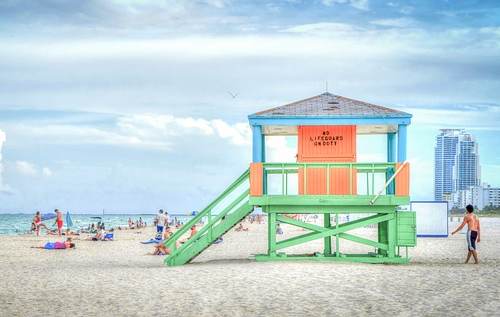Floridian primary insurers would be advised to check their reinsurance plans as the renewal fast approaches, after Demotech, Inc. updated its first-event reinsurance requirements to mandate that a 1-in-130 year loss event be covered.
 The figure has been increased in 2019 from a requirement that reinsurance should cover a 100 year first-event loss for Floridian insurers to a 130 year first-event loss.
The figure has been increased in 2019 from a requirement that reinsurance should cover a 100 year first-event loss for Floridian insurers to a 130 year first-event loss.
Demotech, who rates the financial stability of insurance firms operating in the state of Florida, sent out a memo to carriers at the end of February, detailing the new requirement to boost reinsurance towers to ensure a first-event loss at the 1-in-130 year probability is now covered.
At the same time the firm is allowing more flexibility in the way coverage further up the reinsurance tower is structured, for second and subsequent loss events.
The company also warned carriers that rely on reinsurance, that they should not expect it to relax its reinsurance requirements, should costs increase.
At first glance, an increase from covering a 100 year hurricane to a 130 year hurricane sounds like good news for reinsurers and ILS funds, in terms of new demand generated.
But in reality the difference will only affect the more thinly capitalised carriers in Florida, given so many of the larger and more established players already buy reinsurance to beyond the requirements set by Demotech.
But the demand profile could change for a number of carriers in Florida and there will be some new demand as a result of Demotech’s change, which could force them to rethink their reinsurance towers and may be positive for collateralized or ILS players who get a fresh look at some towers they had previously had less access to.
In addition, it’s worth pointing out that the higher layers and those that sit adjacent to FHCF coverage are often considered the sweet spot of the Florida reinsurance towers for ILS capital, hence there is the potential for there to be more demand at levels the ILS market is keen to service.
One company who isn’t concerned is HCI Group, whose CEO Paresh Patel said during the carriers recent earnings call that the change won’t negatively affect HCI.
“The net effect of going from a 100 year first event limit to 130, basically means your tower if it was at the 100 year level has to go up about 14%. For us that delta is not as big, because we were already buying to greater than 1-in-100,” Patel explained.
“Because of the way our tower is structured, 45% of that number is already more than bought for because of the Florida Hurricane Cat Fund,” he continued “So to us, the impact is not as great as to some other folks.”
However, Patel went on to say that “it is material to most people, especially if you’ve been buying it to just 1-in-100,” suggesting some new demand may be found at the upcoming June reinsurance renewal.
Of course, there are other dynamics to consider at the Florida reinsurance renewals. Price being a key one.
Given the requirement to buy more reinsurance protection for the first-event loss, it’s possible some Floridian primary carriers will elect to bulk up their FHCF percentage, while buying more private market reinsurance further up their tower, to utilise the FHCF to moderate pricing at the renewal.
But what’s really important for carriers is to ensure they have robust coverage from whatever source, hence Demotech’s move to make insurers better able to pay their claims from major storms is positive for insurance consumers in the state.
Reinsurance and ILS protection through instruments such as catastrophe bonds, are key to Floridian insurers ability to trade effectively and offer relatively cost-effective coverage in the state.
Just how this Florida renewal plays out remains to be seen, given the dynamics around FHCF percentage and now the Demotech increase to 130 year first-event coverage.
While some demand was expected to disappear, after some carriers elected to utilise more FHCF coverage, the Demotech rule could counteract that and see demand relatively stable at the June reinsurance renewals.
Patel from HCI made a very good point on how to look at Floridian carriers motivations as the renewal approaches, highlighting that while the FHCF can offer cheaper reinsurance than the private market, the cost is not always the most important factor (or at least shouldn’t be).
“Historically, our additional 45% that we have been buying from the market has been slightly more expensive than the Cat Fund,” Patel explained, adding that “It’s not always about the cost, it’s about the value of this.”
This Florida reinsurance renewal looks set to force carriers to reconsider the value of different sources of reinsurance capacity, as they seek to cover themselves up to the levels required.
 View all of our Artemis Live video interviews and subscribe to our podcast.
View all of our Artemis Live video interviews and subscribe to our podcast.
All of our Artemis Live insurance-linked securities (ILS), catastrophe bonds and reinsurance video content and video interviews can be accessed online.
Our Artemis Live podcast can be subscribed to using the typical podcast services providers, including Apple, Google, Spotify and more.































